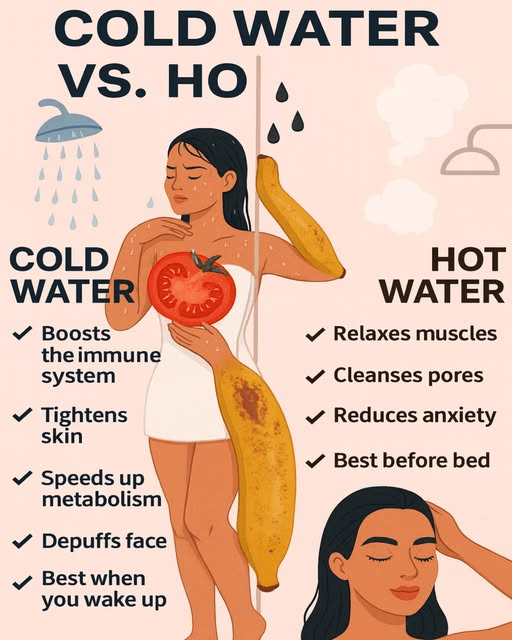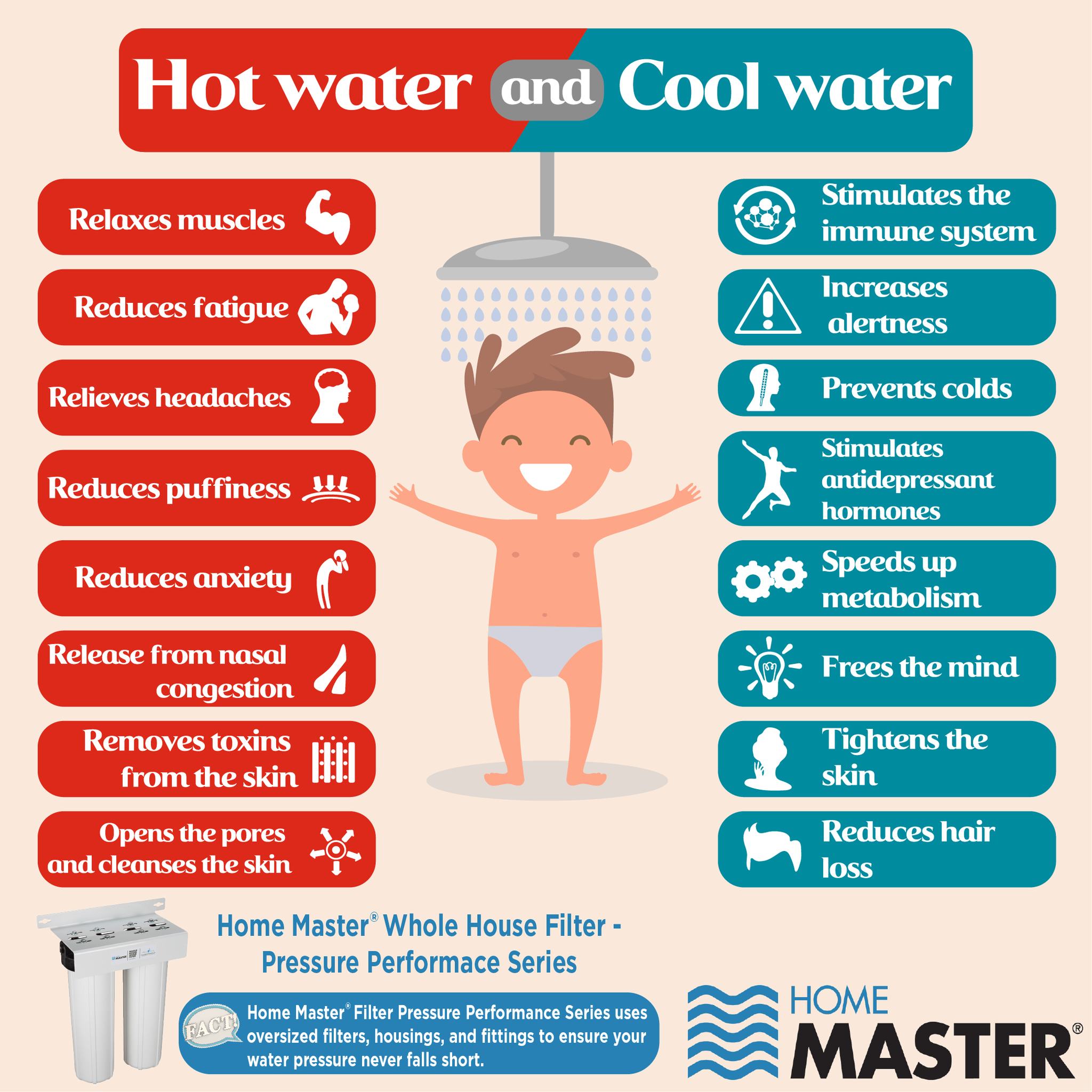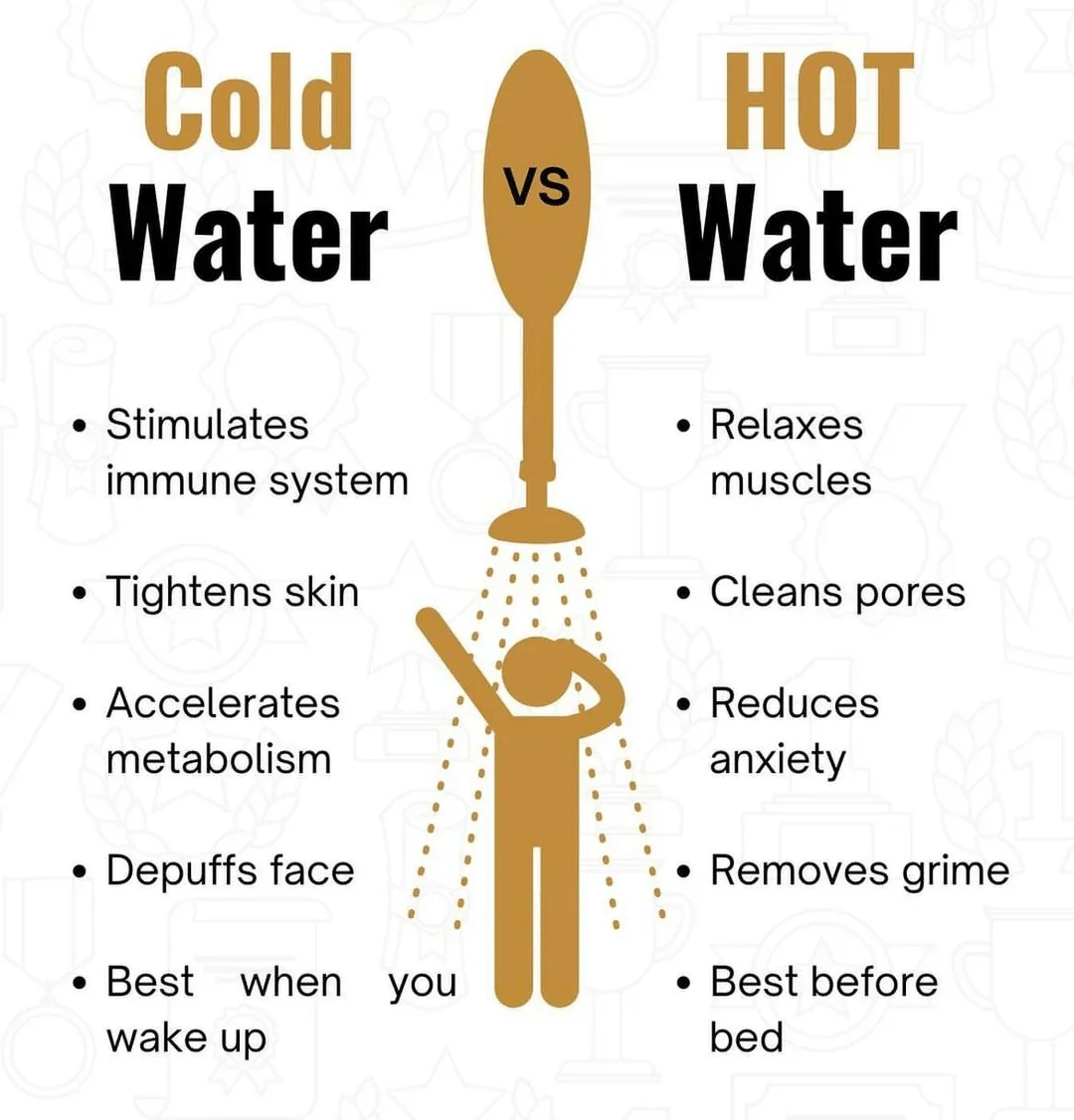It’s one of those small daily choices that can make a big difference: the temperature of your water. Whether you’re stepping into the shower, washing your face, or hydrating after a long day, the question often arises — cold or hot?

You may think it’s just a matter of comfort, but research and tradition suggest otherwise. The temperature of your water can affect your skin, metabolism, mood, and even your immune system. The difference between cold and hot water isn’t just about sensation — it’s about what’s happening inside your body.
So, which one is better for you? Let’s dive in and uncover the surprising science and subtle art of choosing the right temperature — for your health, energy, and well-being.
The Morning Mystery: Why Cold Water Feels Like a Shock — But Works Wonders
You know that instant jolt when cold water hits your skin — the sharp breath, the sudden alertness, the tingle that races down your spine. It feels like a shock to the system — because it is. But it’s also one of the healthiest ways to wake your body up.
Cold water triggers the body’s fight-or-flight response, releasing a burst of adrenaline that increases heart rate, oxygen intake, and circulation. That’s why after a cold shower, you often feel invincible — clear-headed, alert, and full of energy.
This isn’t just mental. Studies suggest that cold exposure can:
- Boost the immune system by stimulating white blood cell production.
- Speed up metabolism, as the body works to generate heat and maintain balance.
- Tighten skin and pores, improving tone and reducing puffiness.
- Enhance circulation, sending fresh oxygen to muscles and organs.
It’s no coincidence that athletes and wellness experts swear by cold therapy. From ice baths to cold showers, they use temperature shock to speed recovery and strengthen resilience.
The Science Behind the Chill
When exposed to cold water, your blood vessels constrict — a process known as vasoconstriction. This temporarily redirects blood flow to vital organs, improving oxygen efficiency. When you step out of the cold, the vessels expand again, flushing out toxins and refreshing the skin.
Over time, this repeated contraction and expansion can improve vascular function and help regulate blood pressure naturally.
But here’s where it gets even more interesting: cold showers may also activate brown fat, the body’s natural “metabolic engine.” Unlike white fat, which stores energy, brown fat burns calories to produce heat — meaning regular cold exposure might help you manage weight and improve energy use.
Best time for cold water: right after you wake up or post-workout.
It’s nature’s caffeine — minus the crash.

The Warm Embrace: Why Hot Water Heals from the Inside Out
If cold water wakes you up, hot water calms you down.
Think about how your body feels after a long, hot shower. Muscles relax, tension melts, and your breathing slows. There’s a reason warm water is often prescribed as an evening ritual for better sleep.
Hot water soothes the nervous system by promoting the release of endorphins — the body’s natural stress relievers. It relaxes tight muscles, opens pores, and helps the body detoxify through gentle sweating.
Physically, hot water has its own set of healing effects:
- Relieves muscle tension and joint stiffness by improving blood flow.
- Cleanses skin pores, helping remove dirt and oil buildup.
- Reduces anxiety and promotes better sleep through heat-induced relaxation.
- Improves circulation, especially for people with cold hands and feet.
A Story of Contrast: Emily’s Two-Temperature Transformation
Emily, 52, used to struggle with morning fatigue and restless sleep. Her routine was simple — hot showers in the morning and a cup of coffee before bed. But she constantly felt sluggish during the day and wired at night.
When she switched things up — cold showers in the morning and warm baths before bed — the change was dramatic.
“After just a week, I woke up feeling clearer, and I actually slept through the night,” she said. “It’s amazing what temperature can do for your body rhythm.”
Emily’s experience mirrors what many people discover: your body’s reaction to water temperature can reset your circadian rhythm, balancing your energy across the day.
Comparing Cold vs. Hot: The Benefits Side by Side
| Type of Water | Primary Benefits | Best Time to Use | Ideal Purpose |
|---|---|---|---|
| Cold Water | Boosts alertness, tightens skin, improves metabolism | Morning or post-workout | Energizing and immune-boosting |
| Hot Water | Relaxes muscles, reduces stress, promotes sleep | Evening or before bed | Calming and cleansing |
Both temperatures serve a purpose. The secret lies not in choosing one over the other — but knowing when to use each.
The Skin Connection: Hot vs. Cold on Your Face
If your morning routine includes skincare, temperature matters more than you think.
- Cold water can help reduce puffiness, especially under the eyes. It constricts blood vessels, giving your face a firmer, more lifted look.
- Warm water helps cleanse deeper by opening pores and removing trapped oils.
A great approach? Start with warm water to cleanse, then finish with a splash of cold to seal pores and boost circulation. It’s like giving your skin a workout — cleanse, then refresh.

The Inner Effect: Drinking Cold vs. Hot Water
Temperature also affects how your body reacts to the water you drink.
Cold water helps lower body temperature, making it ideal after exercise or in hot weather. It may slightly boost metabolism, as your body uses energy to warm it to core temperature.
Warm or hot water, on the other hand, can:
- Soothe digestion by relaxing intestinal muscles
- Help dissolve fats in the digestive tract
- Improve circulation and relieve bloating
Many traditional healing systems, such as Ayurveda and Chinese medicine, recommend warm water for overall wellness — especially in the morning.
How to Combine Both for Maximum Benefit
If you can’t decide which is better, you don’t have to. You can combine both for an even more powerful health ritual — it’s called contrast hydrotherapy.
Here’s how it works:
- Begin with warm water for 3 minutes to relax muscles and open pores.
- Switch to cold water for 30–60 seconds to stimulate circulation.
- Repeat this 2–3 times.
- End with cold water if you want energy, or warm water if you want relaxation.
This alternating method not only refreshes the skin but also boosts blood flow, strengthens the immune system, and helps regulate body temperature naturally.

The Secret Power of Temperature
You might not realize it, but temperature is a language your body understands deeply. It communicates safety, energy, and restoration.
Cold says, “wake up.”
Hot says, “slow down.”
Learning when to listen to each can change how you feel every day — not just physically, but emotionally.
Cold water can make you sharper, stronger, and more alert.
Hot water can make you calmer, looser, and more at peace.
It’s not a battle between the two — it’s a balance.
The Bottom Line: Choose What Your Body Needs Today
Your ideal water temperature depends on your goal:
- Need focus or a confidence boost? Go cold.
- Need rest or to unwind? Go warm.
Listen to your body. Some days you might crave the invigoration of a cold rinse, while others call for the comfort of warm water.
The real magic isn’t in choosing one side — it’s in knowing when to use each for your benefit.
And the next time you step into the shower or pour a glass of water, remember — it’s not just a routine. It’s an opportunity to support your body, refresh your mind, and restore your balance.
This article is for informational purposes only and does not replace professional medical advice. Always consult your healthcare provider for personalized guidance.



